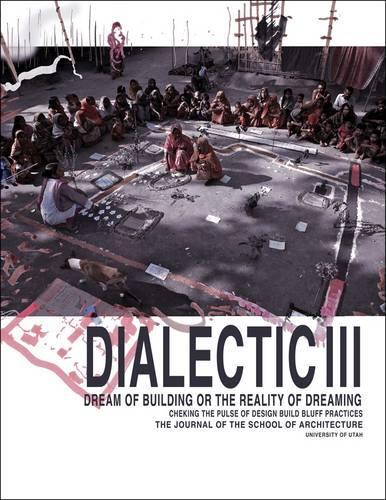
Dialect III: Dream of Building or the Reality of Dreaming
(Paperback)
Publishing Details
Dialect III: Dream of Building or the Reality of Dreaming
By (Author) of
Oro Editions
Oro Editions
1st October 2015
United States
Classifications
Tertiary Education
Non Fiction
720.1
Physical Properties
Paperback
120
Width 215mm, Height 280mm
Description
The third issue of Dialectic focuses on the history, theory, and practice of design build studio and non-profit design industry. Surely, these studios work on the margins. They are realized in geographies and neighbourhoods off the cultural grid. They take students away from the grounding certainties of home and school. They transport participants to a world incompatible with the accepted norms of their educational institutions. They confront them with the limitations of high- tech spectacles born of tourist economy for the vast majority of the world that lie at the heart of disciplinary imagination. They force participants to investigate the ordinary, the understated, and the invisible, born of necessity. Most of these programs invent projects paid for with soft funds and produce clients. They do so in communities too poor to be of interest to the real estate industry and too voiceless to be heard by their councillors. They teach design's reliance on skilled labour. Contributing essays consider if this marginal practice has the strength to hold up a mirror to the centre. They evaluate both its powerful and toothless practices, and reflect on the value of this enterprise. Photo essays provide timelines and approaches to this pedagogic movement. Since these practices create a market for their goods in defiance to the logic of the mainstream marketplace, they impose very trying demands on the time, finances, and logistics of the schools, faculty, and organizations committed to them. Are there strategies and tactics that can ensure their sustainability and secure their future These are some of the issues touched upon here. AUTHOR: The University of Utah School of Architecture is committed to the belief that Architectural education must take as its object the production of thoughtful and humane architects capable of thinking as creatively about their representations of the world as they think about building technology and design. The School of Architecture approaches teaching and practice with a rigor that holds us, and others, accountable to high standards, without losing a sense of adventure, risk taking and discovery. We are dedicated to mentoring young people to help them discover where their passions lie. Illustrated
Author Bio
Shundana Yusaf is an Assistant Professor of Architectural History and Theory at the University of Utah. Her research juxtaposes colonial/postcolonial history with media studies, framing each as a force of globalization. She is the author of Broadcasting Buildings: Architecture on the Wireless, 1927-1945 (Cambridge: MIT Press, 2014). Her second book-length digital humanities project for the Society of Architectural Historians, entitled Archipedia Utah (Charlottesville: Virginia University Press, 2016-2017). Her current book, supported by Fulbright, The Resonant Tomb in the Muslim World, 1250 CE to Present, studies the auditory landscapes of the Sufi shrines in Central and South Asia. Ole W. Fischer is an architect, theoretician, historian, and curator working on 20th and 21st century modern and contemporary architecture. Currently he serves as Assistant Professor at the University of Utah. He lectured and published internationally on the history, theory, and criticism of architecture, amongst others in Archithese, Werk, JSAH, MIT Thresholds, Archplus, AnArchitektur, GAM, Umeni, Beyond, West 86th, Framework, and log. He co-edited Precisions - Architecture between Sciences and the Arts (Berlin: Jovis, 2008), the catalogue Sehnsucht - The Book of Architectural Longings (Vienna: Springer, 2010). He is the author of Nietzsches Schatten (Berlin: Gebr. Mann, 2012). The University of Utah School of Architecture is committed to the belief that Architectural education must take as its object the production of thoughtful and humane architects capable of thinking as creatively about their representations of the world as they think about building technology and design. The School of Architecture approaches teaching and practice with a rigor that holds us, and others, accountable to high standards, without loosing a sense of adventure, risk taking and discovery. We are dedicated to mentoring young people to help them discover where their passions lie. Four core beliefs underpin the Utah School of Architecture: - Architects must take Responsibility for their work as a form of political discourse. - Architects must be focused on social, economic, and environmental Resiliency. - Architects must Respect and Respond to the communities in which they work. - Architects must be committed to Design excellence and ecology.
